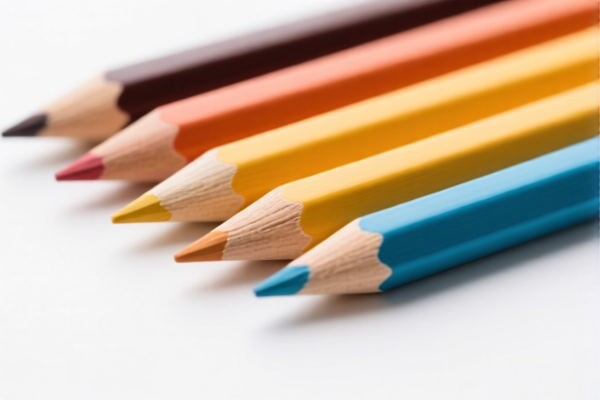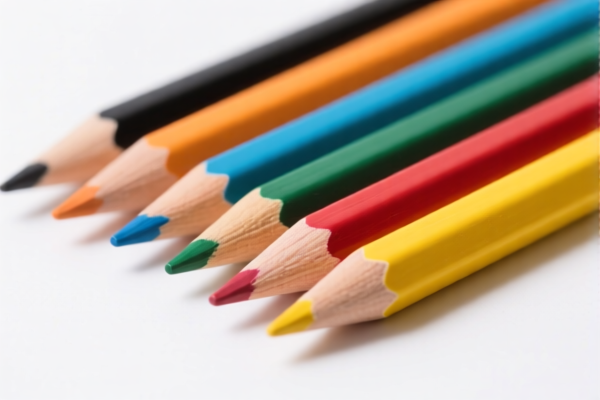| HS Code | Official Doc | Tariff Rate | Origin | Destination | Effective Date |
|---|---|---|---|---|---|
| 9608100000 | Doc | 0.8¢ each + 5.4%+37.5% | CN | US | 2025-05-12 |
| 9608300031 | Doc | 0.4¢ each + 2.7%+37.5% | CN | US | 2025-05-12 |
| 9609908000 | Doc | 37.5% | CN | US | 2025-05-12 |
| 9609908000 | Doc | 37.5% | CN | US | 2025-05-12 |
| 4820102010 | Doc | 55.0% | CN | US | 2025-05-12 |
| 4820102020 | Doc | 55.0% | CN | US | 2025-05-12 |
| 4817300000 | Doc | 55.0% | CN | US | 2025-05-12 |




Pen and Paper
Pen and paper represent a traditional writing and drawing medium consisting of a writing implement (the pen) used with a substrate of paper. This combination has been fundamental to communication, record-keeping, and creative expression for centuries.
Materials
- Pen: Historically made from quills (bird feathers), pens now commonly utilize metal points (steel, tungsten carbide) encased in plastic or metal bodies. Ink types vary widely including ballpoint, gel, fountain pen ink, felt tip, and more. Each ink type offers different characteristics regarding flow, permanence, and color vibrancy.
- Paper: Produced from wood pulp, cotton, or other fibrous materials. Paper varies significantly in weight (gsm), texture (smooth, rough), color, and size. Different paper types are suited for different purposes – writing, drawing, painting, printing, etc.
Purpose
The primary purpose of pen and paper is to facilitate the creation of visible marks for:
- Writing: Recording thoughts, ideas, information, stories, letters, and documents.
- Drawing: Creating sketches, illustrations, technical diagrams, and artistic works.
- Note-taking: Capturing information during meetings, lectures, or personal reflection.
- Planning & Organization: Creating lists, schedules, and calendars.
- Creative Expression: Journaling, poetry, calligraphy, and artistic design.
Function
The function relies on the transfer of ink from the pen’s reservoir onto the paper surface through the pen’s tip. Pressure applied to the pen causes the ink to flow, creating a visible line. The characteristics of the pen (tip size, ink viscosity) and paper (texture, absorbency) influence the quality and appearance of the marks.
Usage Scenarios
- Education: Note-taking in classrooms, completing assignments, taking exams.
- Professional Settings: Writing reports, taking meeting minutes, signing documents, brainstorming.
- Personal Use: Journaling, letter writing, creating to-do lists, sketching, creative writing.
- Art & Design: Sketching, illustration, calligraphy, technical drawing, architectural plans.
- Gaming: Role-playing games (character sheets, maps, notes), puzzles (crosswords, Sudoku).
Common Types
- Ballpoint Pens: Utilize a small rotating ball to dispense ink. Durable, reliable, and widely available.
- Gel Pens: Use a gel-based ink that provides smoother writing and vibrant colors.
- Fountain Pens: Employ a nib and reservoir to deliver ink. Known for their elegant writing experience and variety of nib sizes.
- Rollerball Pens: Similar to ballpoint pens but use water-based or gel ink for smoother writing.
- Fineliners: Feature a narrow tip for precise drawing and writing.
- Markers: Utilize a porous tip to dispense ink, available in a wide range of colors and tip sizes.
- Pencils: While not strictly “pen” based, often used in conjunction with paper for sketching and drafting.
- Notebooks: Bound collections of paper, available in various sizes, ruling styles, and cover materials.
- Sketchbooks: Typically feature heavier-weight paper suitable for drawing and sketching.
- Legal Pads: Yellow paper with red lines, commonly used in legal and professional settings.
The declared goods consist of writing instruments (pens) and a writing medium (paper). Here's a breakdown of relevant HS codes based on the provided information:
- 9608100000: This HS code covers ball point pens. It falls under Chapter 96 (Miscellaneous manufactured articles), Heading 9608 (Pens, felt tipped and other porous-tipped pens and markers; fountain pens, stylograph pens and other pens; duplicating styli; propelling or sliding pencils). The tax rate includes a base tariff of 0.8¢ each plus 5.4%, with an additional 7.5% tariff. After April 2, 2025, the additional tariff increases to 30%, resulting in a total tax rate of 0.8¢ each + 5.4% + 37.5%.
- 9608300031: This HS code covers fountain pens, stylograph pens, and other pens, including India ink drawing pens. It also falls under Chapter 96, Heading 9608. The tax rate structure is similar to 9608100000: a base tariff of 0.4¢ each plus 2.7%, with an additional 7.5% tariff, increasing to 30% after April 2, 2025, for a total of 0.4¢ each + 2.7% + 37.5%.
- 4820102010: This HS code covers diaries, notebooks, and address books, bound. It falls under Chapter 48 (Paper or paperboard; articles of paper pulp, paper, paperboard, cellulose wadding or fibres), Heading 4820 (Registers, account books, notebooks, order books, receipt books, letter pads, memorandum pads, diaries and similar articles). The tax rate includes a 25.0% additional tariff, increasing to 30% after April 2, 2025, resulting in a total tax rate of 55.0%.
- 4820102020: This HS code covers memorandum pads, letter pads, and similar articles. It also falls under Chapter 48, Heading 4820. The tax rate structure is identical to 4820102010: a 25.0% additional tariff, increasing to 30% after April 2, 2025, for a total of 55.0%.
- 4817300000: This HS code covers boxes, pouches, wallets, and writing compendiums containing an assortment of paper stationery. It falls under Chapter 48, Heading 4817 (Envelopes, letter cards, plain postcards and correspondence cards, of paper or paperboard; boxes, pouches, wallets and writing compendiums, of paper or paperboard, containing an assortment of paper stationery). The tax rate includes a 25.0% additional tariff, increasing to 30% after April 2, 2025, resulting in a total tax rate of 55.0%.
- 9609908000: This HS code covers pencils (other than those of heading 9608), crayons, pencil leads, pastels, drawing charcoals, writing or drawing chalks, and tailors' chalks. It falls under Chapter 96, Heading 9609 (Pencils (other than those pencils of heading 9608), crayons, pencil leads, pastels, drawing charcoals, writing or drawing chalks and tailors' chalks). The tax rate includes a 7.5% additional tariff, increasing to 30% after April 2, 2025, for a total of 37.5%.
Customer Reviews
No reviews yet.